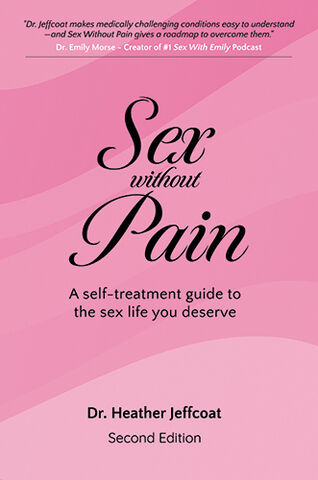Alphabetical Index of Articles on Women's Sexual, Pelvic Floor, and Reproductive Health
Anorgasmia/Dysorgasmia - No Orgasms, Diminished Orgasms, Painful Orgasms

Anorgasmia / Dysorgasmia - Orgasm Related Problems and Solutions
Anorgasmia and Dysorgasmia are clinical terms whose symptoms include complete lack of orgasm, diminished orgasms, and even painful orgasms. Causes can include physical, mental, and emotional factors.
Dysorgasmia / Painful Orgasms
Dysorgasmia is defined as a painful orgasm, but without any prior pain during sexual intercourse. The pain often manifests as a cramping sensation in the pelvis, buttock(s) or abdomen. The duration of pain from dysorgasmiacan last from seconds to minutes to several hours.
Healthline | Yes, It’s Possible to Have a ‘Bad’ Orgasm — Here’s What It Looks Like

What exactly is a "bad orgasm"?
Bad orgasms are defined as a non-positive, non-pleasurable, or negative orgasm.
And according to a 2019 study published in the Archives of Sexual Behavior, “bad” orgasms can negatively affect a person’s relationships, sexuality, and psychological health.
It’s important to note that bad orgasms can occur during consensual sex or acts of assault. Here, we’ll be focusing on the former.
Healthline: Orgasm Shouldn’t Be Painful — Here’s How to Find Relief

Painful Orgasms: What are Some of the More Common Causes?
Healthline's latest article on painful orgasms includes Heather's insights into pelvic floor over-reactivity and its correlation to issues of painful vaginal and anal orasms.
Orgasms are always pleasurable, right? Actually, wrong.
For some people, orgasms aren’t even “just OK.” They’re downright painful. Officially known as dysorgasmia, painful orgasms are something someone of any anatomy can experience.
Pelvic floor over-reactivity
In vulva owners, the most common cause of dysorgasmia is pelvic floor dysfunction.
As a refresher: the pelvic floor muscles are located in the — you guessed it! — pelvis. They span from the pubic bone (in the front) to the coccyx (in the back) and from side to side.
Lower Abdominal Pain with Orgasm - Female Dysorgasmia

What to Know if You're Experiencing Lower Abdominal Pain with Orgasm
Read on for Common Causes and Solutions
Pain with orgasm or climax is called dysorgasmia, and it can be caused by physical, emotional and/ or psychological factors. Typically dysorgasmia is felt as pain with climax in or around the lower abdomen or clitoris, but symptoms can feel different from one person to the next. Due to a lack of research on female dysorgasmia, it is unknown how many vulva-owners experience pain with orgasm. However, around 3 in 4 people with a vulva have experienced pain with vaginal penetration (called dyspareunia) at some point in their life, according the American College of Obstetricians and Gynecologists (ACOG).
O.School | What is a Ruined Orgasm?

Learn the difference between an intentional vs. unintentional ruined orgasm and what it all means.
My office frequently receives calls and emails about orgasm function. "Can you help my orgasms be more intense? Can you help me if I've never had an orgasm? Does my pelvic pain affect my orgasm? I can't orgasm, I can only get aroused-can you help with this, too?"
What all our patients receive after their thorough history and physical examination is education. The clitoris is so much more than what you see peeking out of the hood. It's a large structure that extends underneath the hood and has 'legs" (medically termed "crura") that extend along the pubic ramus and bulbs that lie on either side of the vaginal opening. Understanding your own anatomy is key to figuring out what your next steps are.












